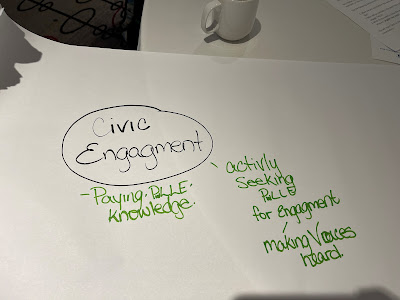A few weeks ago, I attended a conference the BC CDC-funded Community Action Initiative put on. The conference was centred on addressing the toxic drug crisis in our province. It included people with lived and living experience with substances, working in the health field, working in local governments, and elected to local government.
One of the workshops I attended during the conference was on what actions local governments (municipalities) could take around the toxic drug crisis using the Healthy Social Environments Framework.

|
| Healthy Social Environments Framework. Select the image to enlarge. |
In the workshop, my group chose to look at two facets of this framework. The first was on Service Environments, which is focused on the availability and coordination of services in a community. Examples of these services include but aren't limited to, healthcare, schools, childcare and early learning, seniors programs and facilities, Indigenous services, newcomer services, food and income supports, and recreation.

|
| Brainstorming: Service Environments Facet of Healthy Social Environments Framework. Select the image to enlarge. |
Our group looked at the coordination role that local government can play in connecting people with each other and with services provided directly by the province, local government, and non-profits.
We talked about championing a common system in each community where people's stories and needs are documented and available to all service providers (of course, with the proper private precautions.) This system ensures that people don't have to tell their story multiple times, don't fall through the cracks, and don't need to understand complex systems, as the system would include built-in referrals.
The coordination is further encircled with community space, training, and wrap-around services.
We are starting with this coordination in Langley City.
The second facet we looked at was Civic Engagement which is the degree to which people participate in political processes and positively contribute to their community.

|
| Brainstorming: Civic Engagement Facet of Healthy Social Environments Framework. Select the image to enlarge. |
There are barriers for some people to get civically engaged, such as a lack of time, health challenges, or because of being precariously housed. Our group thought that local governments needed to go above typical outreach practices and actively seek out people who are typically underrepresented in civic engagement processes today. When it comes to the toxic drug crisis in BC, it means including people with lived and living experience with substances.

No comments:
Post a Comment
All comments are moderated.